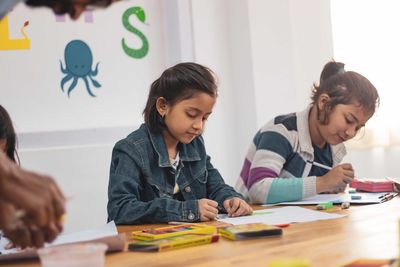How Does Native Language Influence The Second Language Acquisition?

A Turkish proverb infers: "One who speaks one language is one person while one who speaks two languages is two people."
Table of Contents
Are you ready to teach English abroad?
It refers to the cultural influences of language learning. It signifies the fact that with learning a new language comes a change in the way the mind works.
This post was written by our TEFL certification graduate Isiaka O.
Language
The process of transmitting pre-learned, coded, audible and inaudible messages from one person to another and receiving acknowledgment, understanding, and most times, elicit a response in kind. It is unique to humans.

Also Read: Guide to Teaching Receptive Skills in the EFL Classroom
Language has different uses:
1. Directive UseThey are special forms of communication that mostly include a body of instructions on future conduct, stating norms.
2. Informative UseLanguage is used to pass factual messages. In this case, these messages can be verified as true. These include lectures, admonition, advice, etc. They involve day to day activities.
3. Expressive UseThese are language uses that include emotions and other intangible feelings. They rarely are verifiable.
Also Read: Games in the Classroom - The Antidote to Foreign Language Speaking Anxiety

Language acquisition
This refers to the process of making use of the human capacity to hear, learn, remember and use sounds repetitively in order to communicate feelings, ideas, opinions, and desires.
Humans, being the only ones in its class, learns to use language from the beginning of its life by listening, memorizing and imitating by the reproduction of sounds. Babies have a very receptive memory. They listen to the sounds produced by adults and try to replicate the same scenario. Most babies' first words often refer to names they hear around them. However, as they grow a bit more intelligent, they realize that those sounds actually have expected responses and outcomes.
They listen for nuances in sound that refer to emotions, monitoring the lulls and the highs and recording what those mean by looking out for patterns. There are so many theories about understanding first languages. One thing they all agree is that learning at that stage involves structure, rules, and representation. Realistically, Speech production comes after the important and difficult aspect of speech perception. A baby will spend years trying to make sense of the sounds and tones around him. He tries to connect sounds to responses.
Subsequently, the baby goes on to mimic those sounds, watching out for expected responses to each sound and systematically relying on the age-old trial and error format. The child continues to develop the capacity to successfully use language by developing in a range of competencies, including increasing vocabulary, phonology, syntax, semantics and morphology.
The point of this presentation is to show the natural method of learning an individual's first language could be replicated; that this same process could be applied to the acquisition of another language at an older age.

Second Language Learners
People who try to learn a second or another language often have difficulties applying this new knowledge in their everyday life. This always seems difficult due to various factors which include, but not limited to; a feeling of shame, a lack of confidence, a sense of inadequacy concerning the actual knowledge, etc. This is often due to the defective methods used in language classes (in this case, EFL classes). Teachers often forget to play the role of a facilitator, ending up taking up all the talk time without allowing time for real practical exercises.
EFL Teachers, who understand the local language (with students who speak the same language) tend to rely too much on such language hence, creating a too comfortable in-class experience but in truth, robs them of the process of memorization, familiarization and adaptation of the English language just as it was with the baby learning a new language. That brings this whole presentation into focus. Since the mind works in a certain way and had already shown the easiest method to learn a new language earlier in life, doesn't it seem best to follow those same steps for the new potential language?
The teacher will do well to adopt the Engage, Study, and Activate (ESA) method, which closely captures the natural first language learning process.

Engage:Creating awareness and talking about an issue generally between the teacher and students in order to create a rapport. This process helps in lightening up the mood and also helps the students identify with the topic.
Study:This phase includes class activities like different forms of memory games, devising various means of drilling useful lines into the students' mind with the aid of repetition.
Activate:At this point, the students will have to produce their newly acquired knowledge in a real-life situation.
Also Read: Teaching ESL & Knowing Your Audience: Young Learners vs. Adults

Are you ready to teach English abroad?
Finally, a Chinese proverb says: "To learn a new language, is to have one more window from which to look at the world".
Apply now & get certified to teach english abroad!
Speak with an ITTT advisor today to put together your personal plan for teaching English abroad.
Send us an email or call us toll-free at 1-800-490-0531 to speak with an ITTT advisor today.
Related Articles:
- Top 10 Mistakes to Avoid in the Classroom While Teaching English Abroad
- The 5 Most Common Types of EFL Students and How to Deal with Them
- 5 Reasons to Take a TEFL Course Right Now - Even If You Are Not Leaving Yet
- 3 Steps for Dealing with a Student with Challenging Behavior
- The 10 Most Common Types of EFL Teaching Jobs
- 5 Simple Tips to Improve Your Classroom Management Skills



